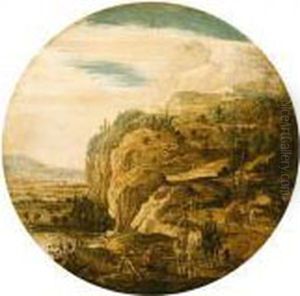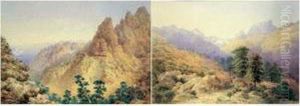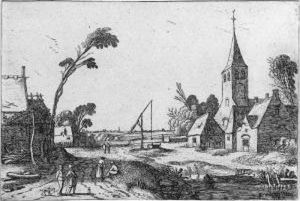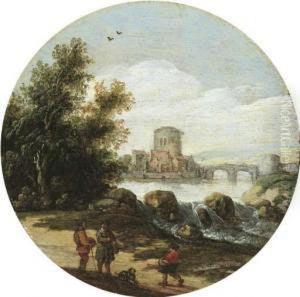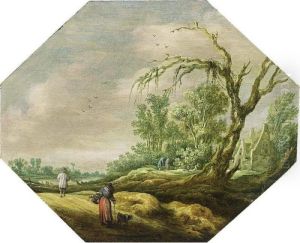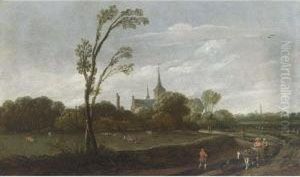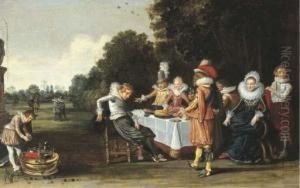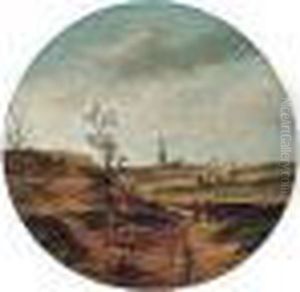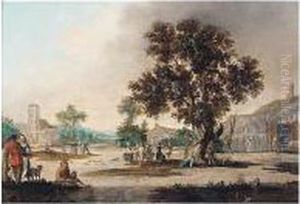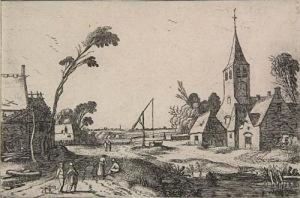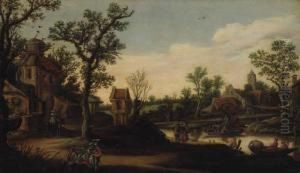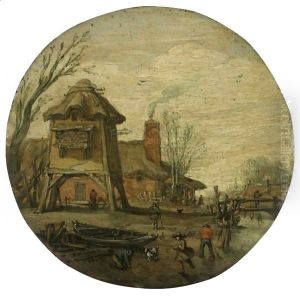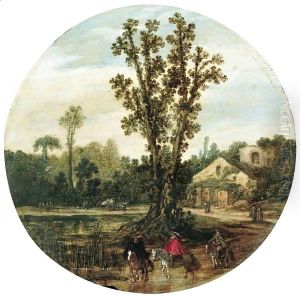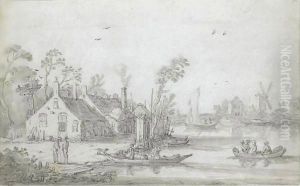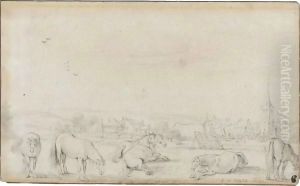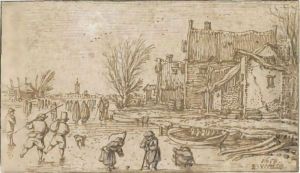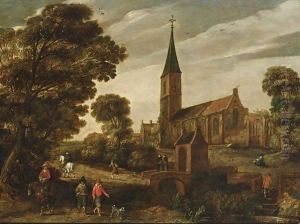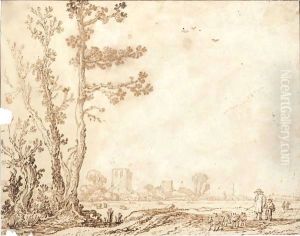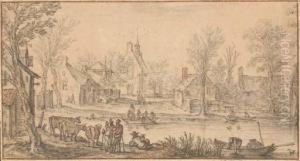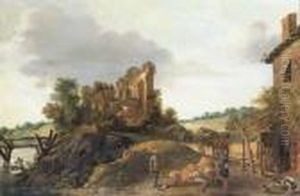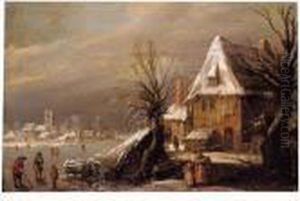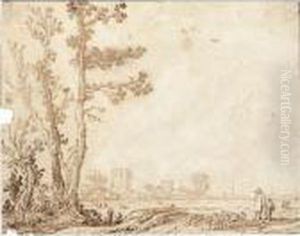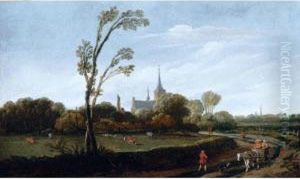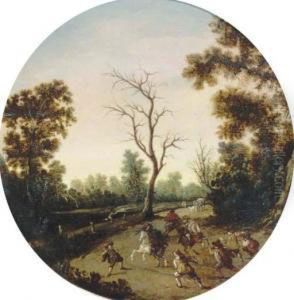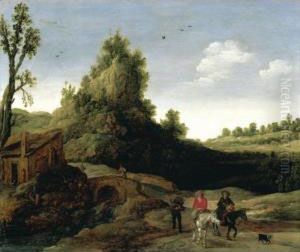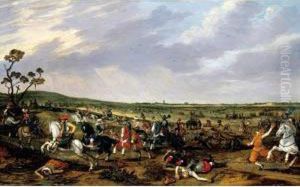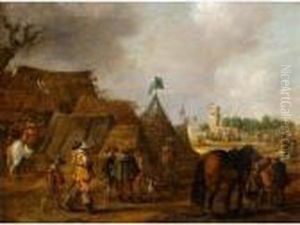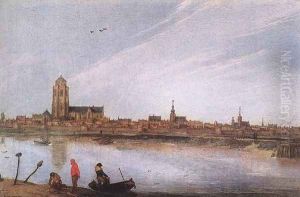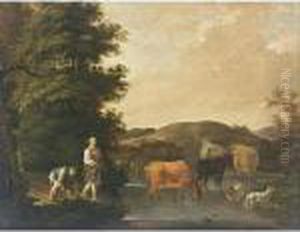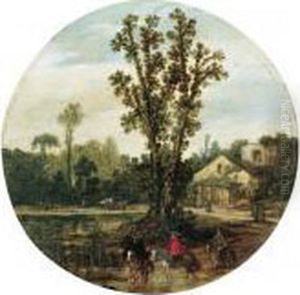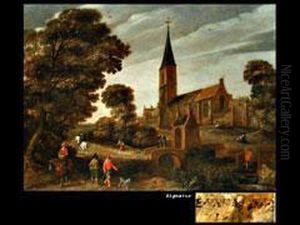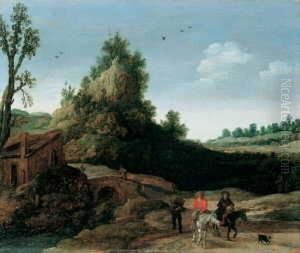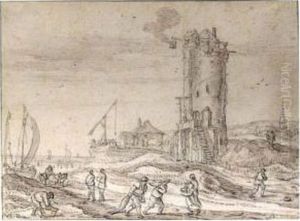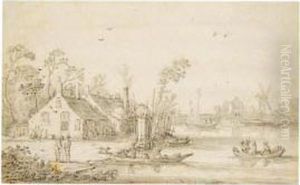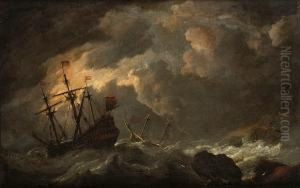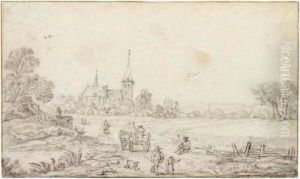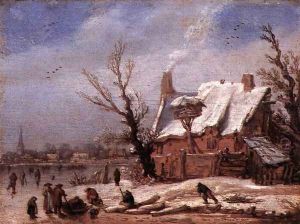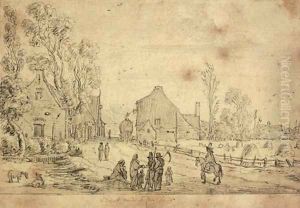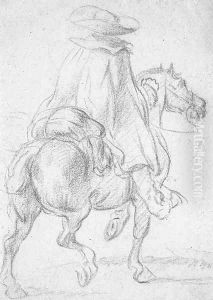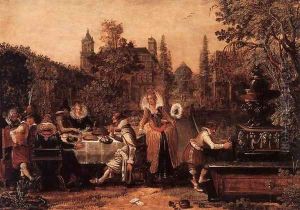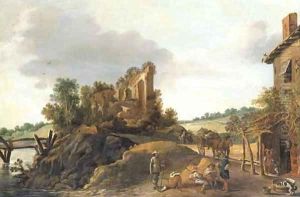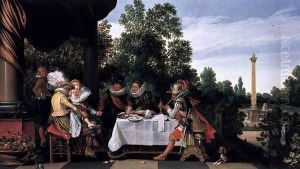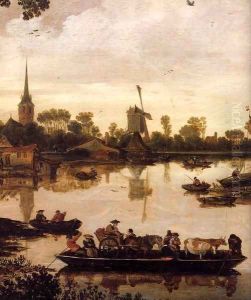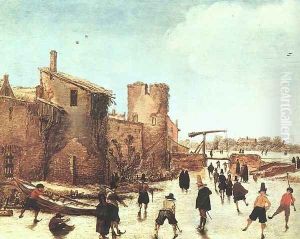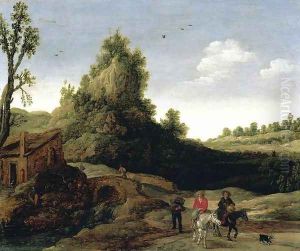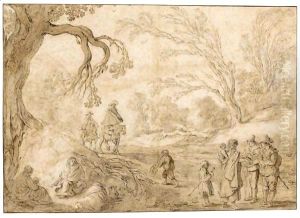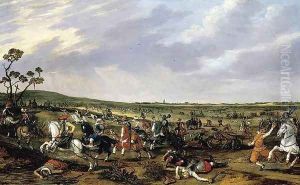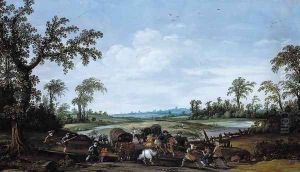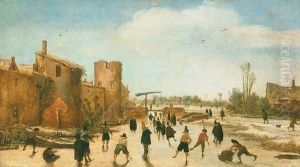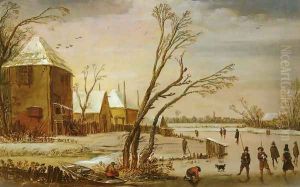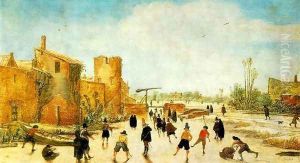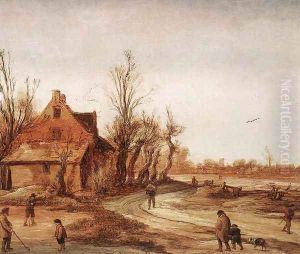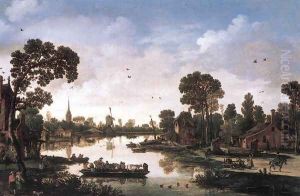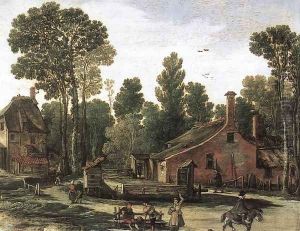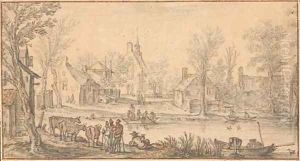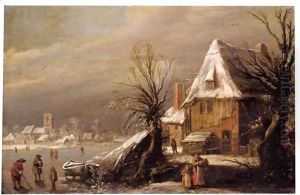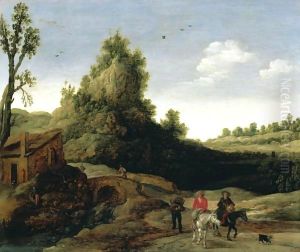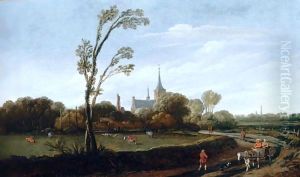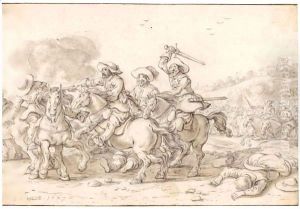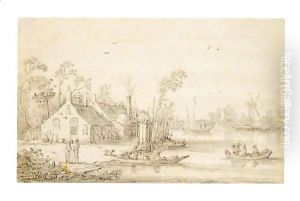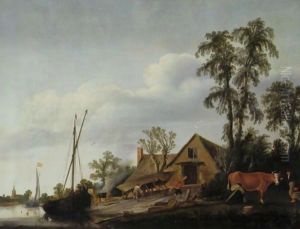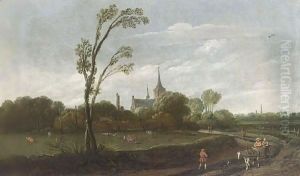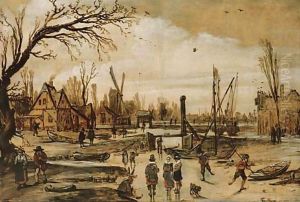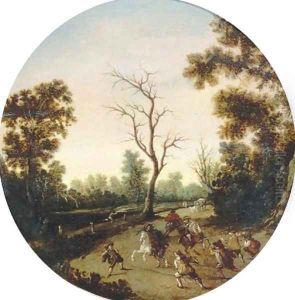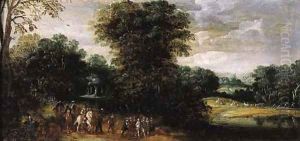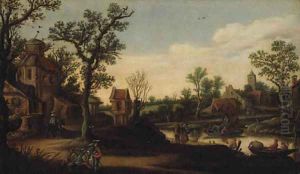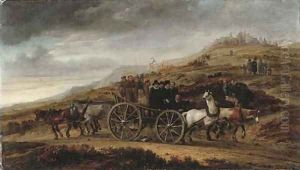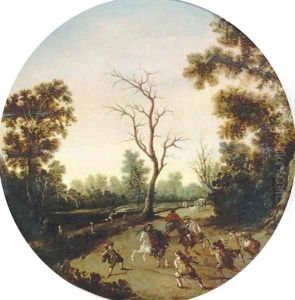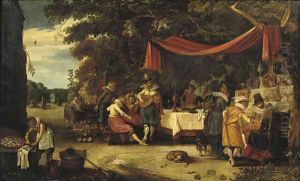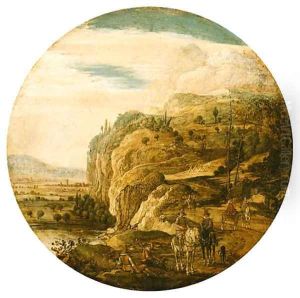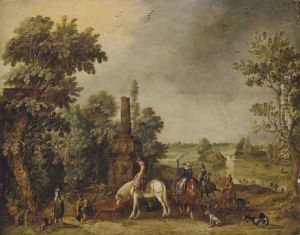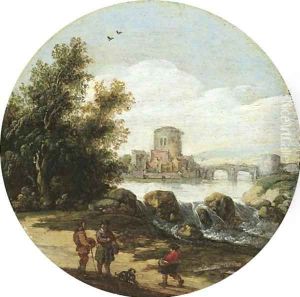Esaias Van De Velde Paintings
Esaias van de Velde was a significant figure in the Dutch Golden Age of painting, known for his pioneering work in the development of landscape painting. Born into an artistic family in Amsterdam in 1587, van de Velde was the son of Hans van de Velde, a Flemish immigrant and likely his first teacher. His uncle was the painter Willem van de Velde the Elder, and his cousin, Willem van de Velde the Younger, would also become a well-known marine painter.
Esaias van de Velde initially trained in Amsterdam, but moved to Haarlem around 1610, where he became a student of landscape painter Hendrick Goltzius. He was influenced by the works of Adam Elsheimer and Paul Bril, which is evident in his early works that showcase a Mannerist style characterized by dramatic lighting and dynamic composition.
Over time, van de Velde developed a more naturalistic approach, emphasizing the everyday life and landscapes of his time. He is credited for moving away from the more artificial and allegorical landscapes of his predecessors to paintings that depicted real Dutch scenes. These works often included figures in contemporary dress, engaging in daily activities against the backdrop of the countryside, town scenes, or during military campaigns, which were frequent during the Eighty Years' War.
Van de Velde's influence was significant, and he is often cited as one of the founders of the Realist landscape tradition in Dutch painting. He not only influenced his contemporaries but also future generations of Dutch landscape artists, including Jan van Goyen and Pieter de Molyn, with whom he shares credit for establishing the tonal phase of Dutch landscape painting.
Esaias van de Velde's work was characterized by a harmonious palette, a masterful handling of light, and an ability to create atmospheric perspective. His paintings frequently exhibit a vivid sense of movement and a skilled composition that guides the viewer's eye through the scene.
Despite his contributions to the development of Dutch landscape painting, van de Velde's work was somewhat overshadowed by the later achievements of artists such as Rembrandt and Jacob van Ruisdael. Nevertheless, his work remains an important part of art history, reflecting a transitional moment when the landscape genre was gaining independence and becoming a prominent feature of Dutch art.
Esaias van de Velde died in The Hague in 1630. His legacy lives on through his paintings, which continue to be studied and appreciated for their beauty and historical significance.
